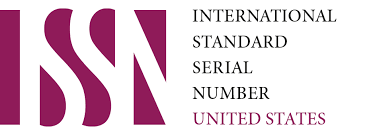Types of Brain Tumor Detection Using Novel Deep Learning
Keywords:
Neural Network, data augmentation, image processing, approachesAbstract
Even in a developed country like America the ratio of the number of hematologist and oncologist together to the number of people per doctor is 1:20,366. Then imagine how much it would be in the entire world? Medical industry has progressed tremendously over the past years and, specifically, the visual and image recognition is being used for many purposes, in many fields very actively. The general Artificial Intelligence (AI) topics, such as, Neural Networks (NN) and related concepts have also gained a lot of popularity lately. For this research, we have proposed a convolutional neural networks (CNN) architecture from scratch with data augmentation, image processing approaches, and neural network pattern recognition. We have compared the pre-existing architecture VGG-16 to our CNN model to determine if the CNN model was more suitable for these types of detection problems. Although, the data that we have used to train the model in our research is comparably small to any industrial application database, the proposed model displayed better accuracy and results than the VGG-16 for this kind of detection problem. Moreover, the proposed model uses less computational and memory power than the VGG-16 model. The secondary purpose of this research is to reduce the use of datasets that are from unrecognized sources. In this paper, we show how we can take the consent of the user and store the data to build a true data set for future educational and medical researchers and to retrain the models for better results.
References
National Brain Tumor Society, "QUICK BRAIN TUMOR FACTS," 2021. [Online]. Available: https://braintumor.org/brain-tumor-information/brain-tumor- facts/.
American Association of Neurological Surgeons, "Brain Tumors," 2021. [Online]. Available: https://www.aans.org/en/Patients/Neurosurgical-Conditions-and- Treatments/Brain-Tumors.
Mayfield Brain & Spine, "What Causes Brain Tumors?" 2021.
ASCO, "2020 Snapshot, State of the Oncology Workforce in America," State of Cancer Care in America, 2022.
Y. LeCun, L. Bottou, Y. Bengio and P. Haffiner, "Gradient-Based Learning Applied to Document Recognition," 1998.
T. D, Sedamkar and R.R., "Detecting Affect States Using VGG16, ResNet50 and SE-ResNet50 Networks," vol. SN COMPUT. SCI. 1, no. 79, 2020.
A. Anwar, "Difference between AlexNet, VGGNet, ResNet, and Inception," [Online]. Available: https://towardsdatascience.com/the-w3h-of-alexnet-vggnet- resnet-and-inception-7baaaecccc96. [Accessed 2019].
C. an, D.C., A. Giusti, L. Gambardella and J. Schmidhuber, "Mitosis detection in breast cancer histology images with deep neural networks.," in International Conference on Medical Image Computing and Computer-Assisted Intervention, Springer, 2013.
A. Bosch, A. Oliver, X. Munoz and J. Marti, " Modeling and classifying breast tissue density in mammograms.," in Computer Vision and Pattern Recognition, IEEE Computer Society Conference on. IEEE, 2006.
Z. Sobhaninia, S. Rezaei, A. Noroozi, M. Ahmadi, H. Zarrabi, N. Karimi, A. Emami and S. Samavi , "Brain Tumor Segmentation Using Deep Learning by Type Specific Sorting of Images".
B. Van Ginneken and R. Summers, "Guest editorial deep learning in medical imaging: overview and future promise of an exciting new technique.," IEEE Trans. Med. Imaging , vol. 35, p. 1153–1159., 2016.
M. Gao, M. Buty, H. Shin, H. Roth, G. Papadakis, U. Bagci, L. Lu, A. Wu, A. Depeursinge and R. Summers, " Holistic classification of CT attenuation patterns for interstitial lung diseases via deep convolutional neural networks.," 2016. .
T. Hossain, F. S. Shishir, M. Ashraf, . M. A. A. Nasim and F. Muham, "Brain Tumor Detection Using Convolutional Neural Network".
U. Javed, A. Ghafoor, M. Riaz and T. Cheema, " MRI brain classification using texture features, fuzzy weighting and support vector machine.," Prog. Electromagn. Res., vol. 53, p. 73–88., 2013.
Q. Dou, H. Chen, L. Shi, P.-A. Heng, L. Yu, L. Zhao, J. Qin, D. Wang and V. Mok, "Automatic detection of cerebral microbleeds from MR images via 3D convolutional neural networks.," IEEE Trans. Med. Imaging, vol. 35, p. 1182– 1195, 2016.
M. Li, L. Kuang, S. Xu and Z. Sha, "Brain Tumor Detection Based on Multimodal Information Fusion and Convolutional Neural Network".
H. A. Khan, W. Jue, M. Mushtaq and M. U. Mushtaq, "Brain tumor classification in MRI image using convolutional neural network," vol. 17, no. 5, 2020.
F. Ciompi, M. Oudkerk, B. de Hoop, S. van Riel, B. van Ginneken, K. Chung, E. Scholten, P. de Jong and M. Prokop, "Automatic classification of pulmonary peri- fissural nodules in computed tomography using an ensemble of 2D views and a convolutional neural network out-of-the-box.," Med. Image Analysis, vol. 26, p. 195–202, 2015.
J. Jiang, W. Yang, W. Chen, Q. Feng, Y. Wu and M. Huang, " 3D brain tumor segmentation in multimodal MR images based on learning population-and patient- specific feature sets. ,," Computer Medical Imaging Graph., vol. 37, p. 512–521, 2013.
J. Kleesiek, G. Urban, A. Hubert, M. B. A. Bendszus, D. Schwarz and K. Maier Hein, "Deep MRI brain extraction: a 3D convolutional neural network for skull stripping.," NeuroImage , vol. 129, p. 460–469, 2016.
N. H. Abiwinanda, H. M., S.T., Handayani, M. A. and 2. T.R., Brain tumor classification using convolutional neural network. In: World Congress on Medical Physics and Biomedical Engineering, Springer, 2018, p. 183–189.
A. U., G. H., K. E., S. M. and G. J., " X-ray categorization and retrieval on the organ and pathology level, using patch-based visual words," IEEE Trans. Med. Imaging , vol. 30, p. 733–746, 2011.
Y. Bar, I. Diamant, L. Wolf and H. Greenspan, "Deep learning with non-medical training used for chest pathology identification.," Proc. SPIE, vol. 40, p. 941, 2015.
J. 2. J. Cheng, W. Huang, S. Cao, R. Yang, W. Yang, Y. Z. Z. Wang and F. Q. , "Enhanced performance of brain tumor classification via tumor region augmentation and partition.," 2015. .[25] H. Chen, X. Qi, J. Cheng and P. Heng, "Deep contextual networks for neuronal structure segmentation.," AAAI, p. 1167–1173, 2016.
J. Cheng, W. Yang, M. Huang, W. Huang, J. Jiang, Y. Zhou, R. Yang, J. Zhao, Y. Feng and Q. Feng, "Retrieval of brain tumors by adaptive spatial pooling and Fisher vector representation," 2016.
Downloads
Published
Issue
Section
License

This work is licensed under a Creative Commons Attribution-NonCommercial 4.0 International License.
User Rights
Under the Creative Commons Attribution-NonCommercial 4.0 International (CC-BY-NC), the author (s) and users are free to share (copy, distribute and transmit the contribution).
Rights of Authors
Authors retain the following rights:
1. Copyright and other proprietary rights relating to the article, such as patent rights,
2. the right to use the substance of the article in future works, including lectures and books,
3. the right to reproduce the article for own purposes, provided the copies are not offered for sale,
4. the right to self-archive the article.












